Best trees for privacy: 10 ways to screen a plot from view
The best trees for privacy offer a subtle and well placed screen rather than blocking views and restricting light
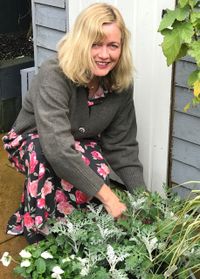
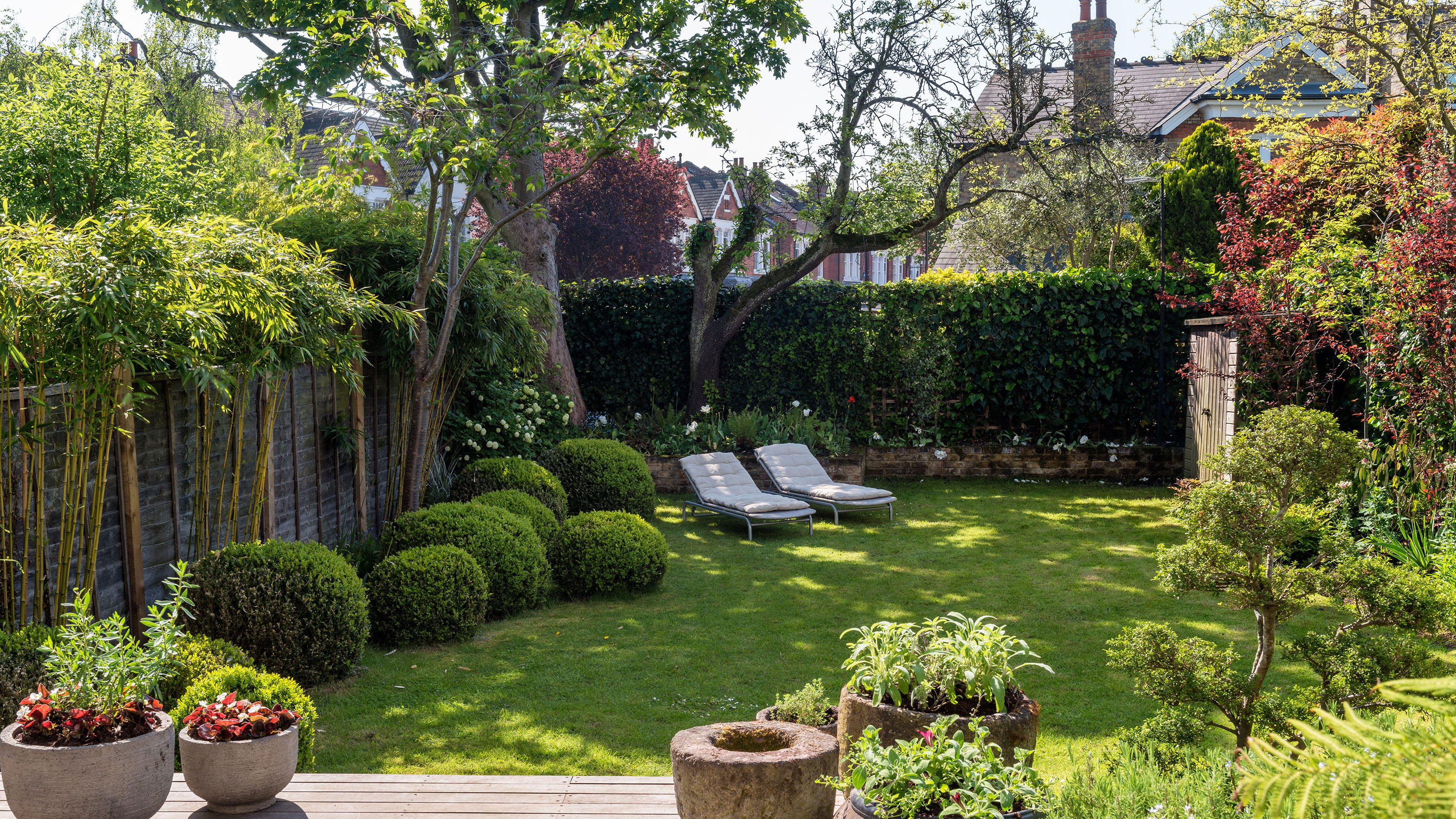
Take time to consider which are the best trees for privacy in your garden. Hasty purchases could result in a tree which is too large for the plot - or the wrong shape to solve the problem.
It is tempting to opt for a fast fix such as a rapidly growing evergreen which will shoot up and mask the problem with dense growth in a couple of seasons. But bear in mind that this could also exclude valuable light from your garden, restricting the growth of existing plants. It might also shade the rooms in your house, and even cause conflict with the neighbors.
If the issue is with one window which overlooks your property, it may be that a carefully placed single tree will be enough to screen the view. Tree shape is a factor, too. Are you looking for a lacy screen of branches to mask an expansive overlooked area? A multi-stemmed tree might solve that problem. Alternatively, a tree which can be tightly clipped into a neat shape, such as English holly or a Holm oak, could block one specific line of sight. To completely obscure a neighbor’s view into your property, trees generally need to be 6-8ft (1.8-2.1m) in height.
Whether you're looking for the best trees for small gardens or ones for bigger plots, the message from the experts is to choose very carefully. According to Tony Kirkham, author of The Kew Gardener’s Guide to Growing Trees, 'don’t be tempted to plant the old-fashioned conifer hedge Leyland Cypress because it is fast growing and cheap to buy. In the long term it will potentially be problematic and ugly.'
Use the best trees for privacy to create a secluded spot
The first step when choosing the best trees for privacy is to measure your garden, find out which way it faces and what kind of soil you have, as these are important factors which can influence the tree type.
Then work out your exact privacy issue. What are you trying to shelter from? According to tree expert Tony Kirkham, 'for privacy planting there may be a neighboring property, windows, ugly street furniture or a busy road that you want to hide.'
Use our selection to choose a privacy tree which will add value and interest to your garden as well as solving a common problem.
1. Banana palm
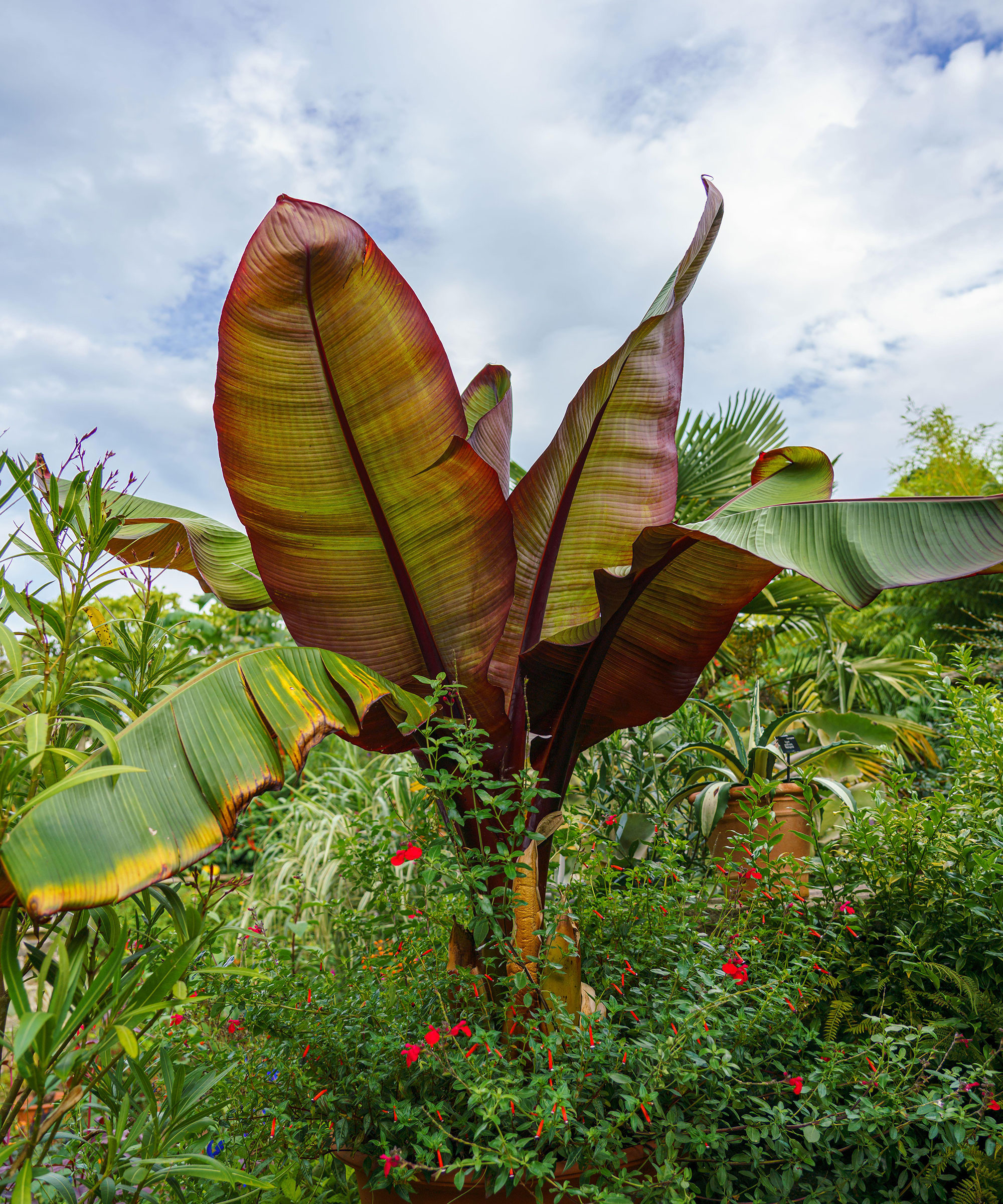
Overlooked by apartments looming above your backyard? The huge paddle shaped leaves of the banana palm act as a living parasol, offering shade and shelter. Although they look like tender plants, these palms will survive cold snaps, although fleecing is a good idea if a prolonged cold snap is forecast. The foliage may die back after frosts.
Cut the plant down to ground level and it should sprout again in late spring. Feed monthly with an all-purpose soluble plant food. Try Musa ‘Red Abyssinian’ for attractive coloring and leaf shape.
Best for: screening from above
2. English holly
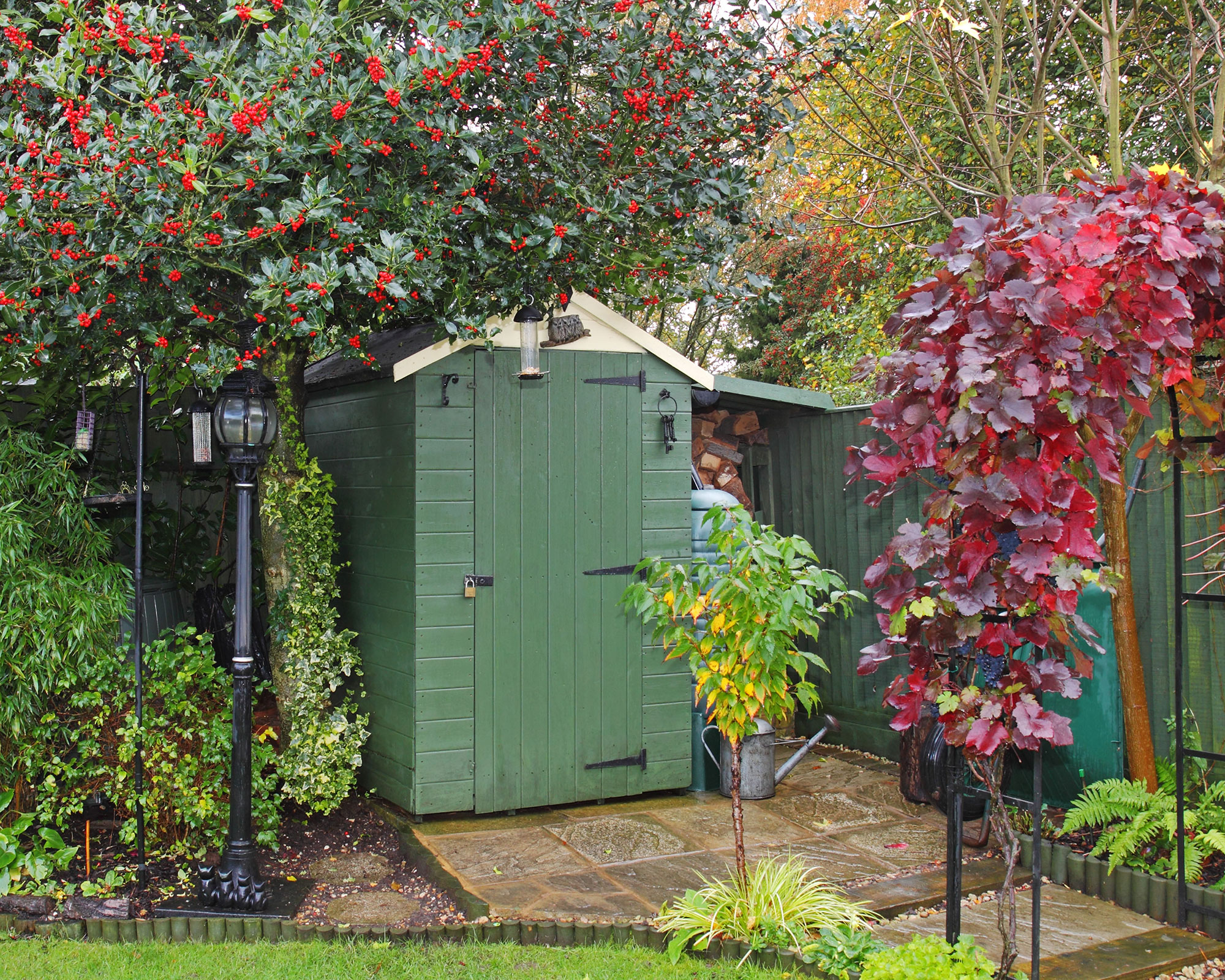
For an elegant and quintessentially English screen, a holly tree (Ilex aquifolium) makes a great choice for one of the best trees for privacy. Evergreen for year-round privacy, they can be precisely shaped to block unwelcome eyes from a particular spot, or allowed to expand into a larger and more natural shape.
As one of the best plants with winter berries, there’s also the bonus of pretty red berries on female trees, if they are grown near a male one.
3. Hornbeam
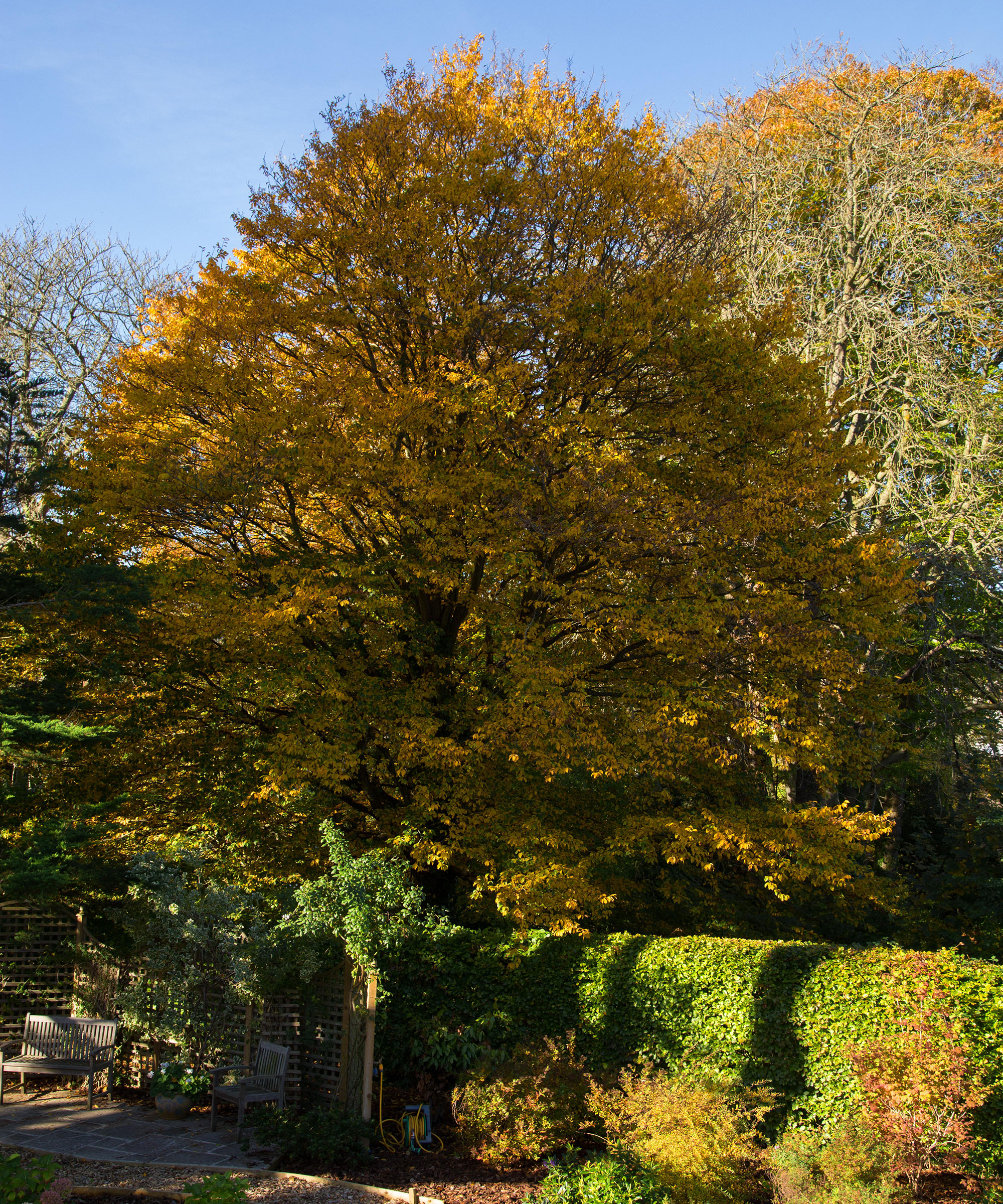
Although this is a deciduous tree, the young stems hang on to their neatly shaped red and gold leaves over the winter months, so you’re always guaranteed some coverage.
Hornbeam (Carpinus betulus) can be grown as a tree or a hedge, but it must be pruned in midsummer to keep control of the size. With an ultimate height of 80ft (25m), it is essential to keep on top of cutting back.
Best for: creating a year-round screen
4. Silver birch
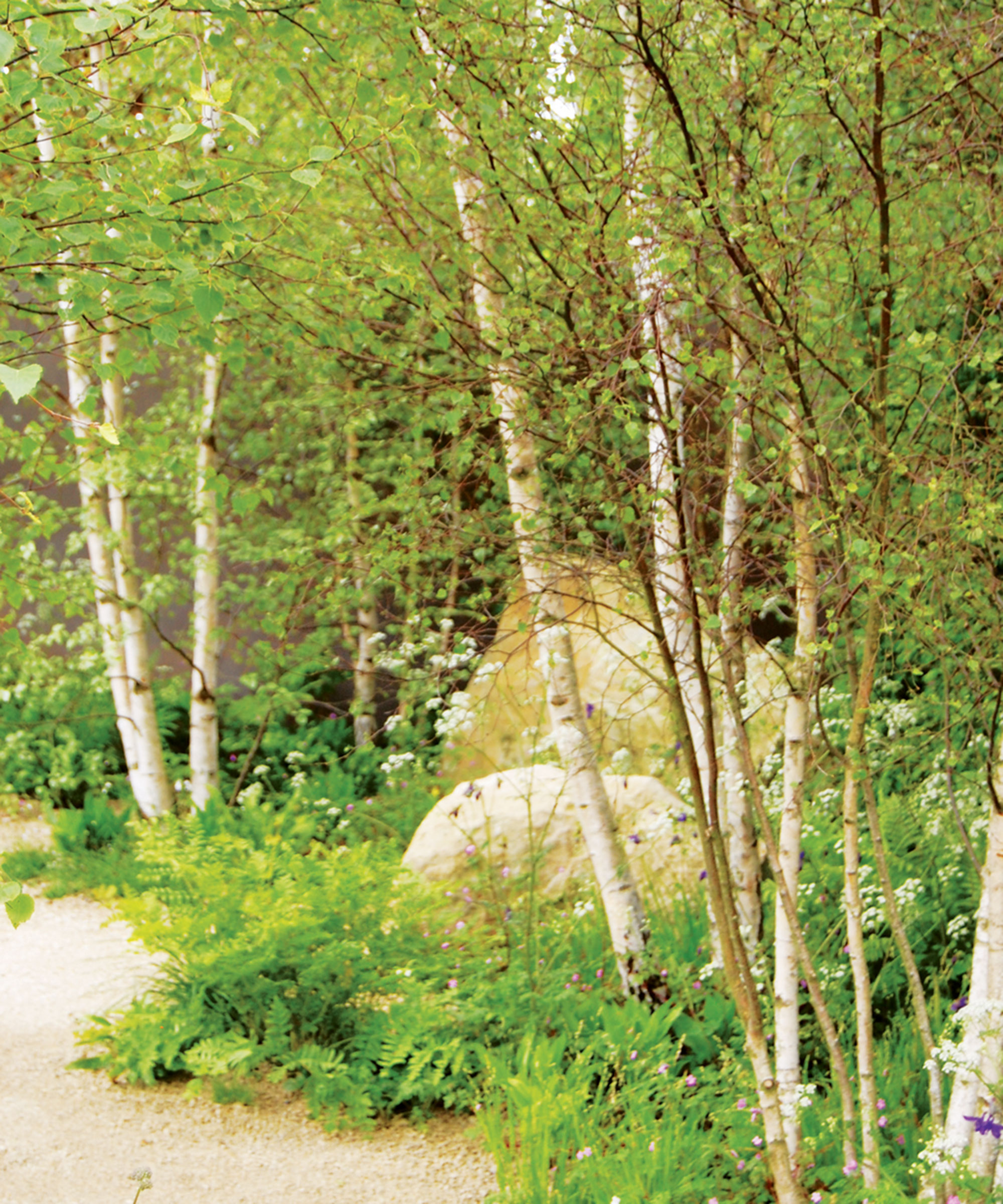
A multi-stemmed silver birch makes a beautiful privacy screen. Its filigree branches with pure white bark and vase shape will let the light through while keeping prying eyes out.
Try Betula utilis jacquemontii ‘Snow Queen’ which will grow in sun or semi shade in most types of well-drained soil and can withstand harsh winters. This tree is frequently recommended by experts as a garden essential. 'It is bullet proof,' says Michael Buck of Form Plants.
Best for: light screening
5. Photinia standard tree
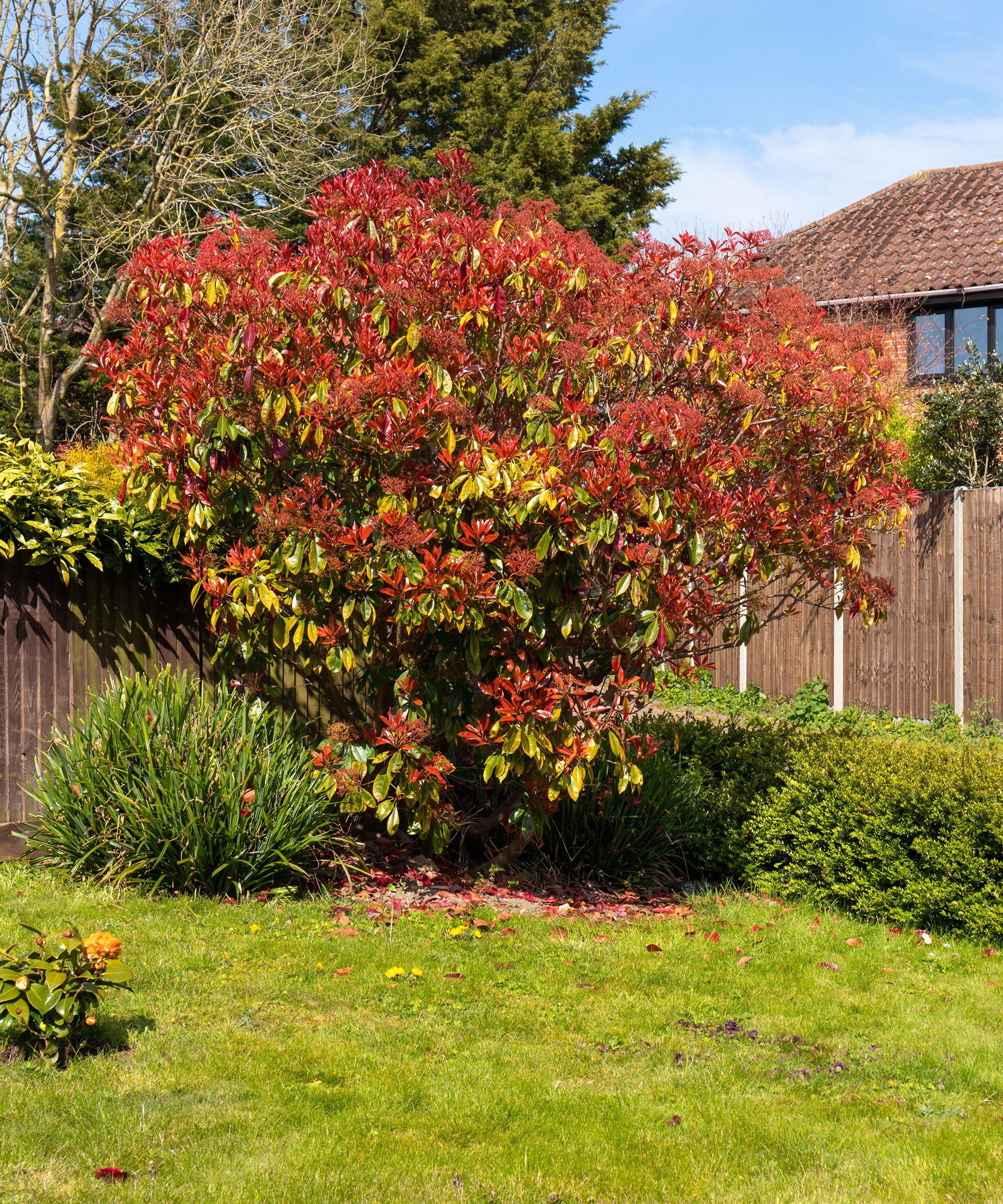
Photinia is a dense, evergreen shrub, but it can be bought as a shapely tree grafted on to a clear stem (that’s a long, slender trunk). ‘Red Robin’ is a good choice as the young leaves are an attractive scarlet. This can be encouraged by regular, gentle trimming in spring and summer. It has pretty white flowers in April and May.
This tree is a good option if you're searching for the best plants for fence lines, as it grows at up to 30cm per year, reaching an ultimate height and spread of 16ft (5m). It will grow in full sun or partial shade.
Best for: screening above the fence line
6. Laurel tree
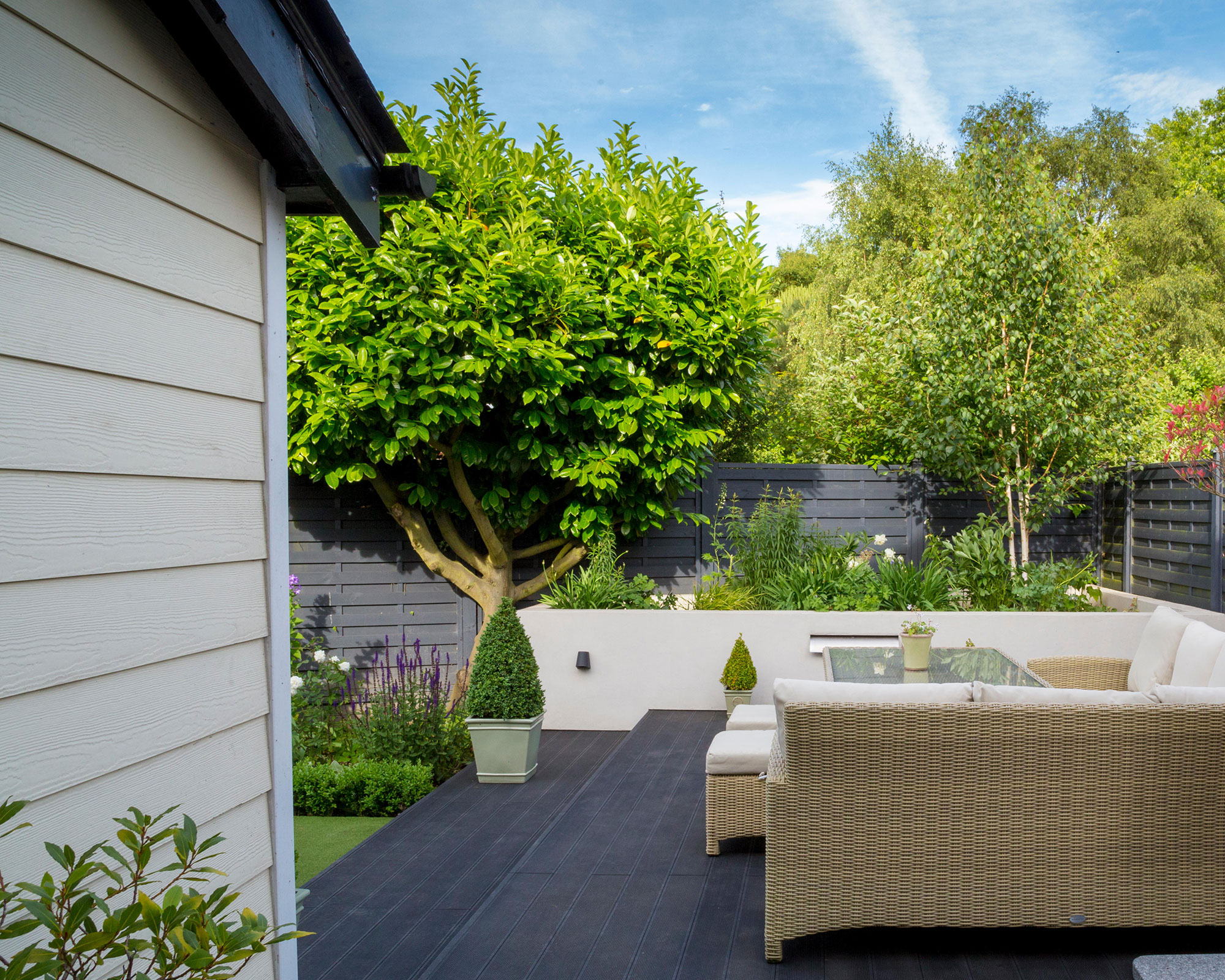
Best known as a bay tree, these evergreen conical-shaped trees lend themselves to container gardening, perhaps to screen off a small seating area. The leathery, evergreen foliage has a wonderful scent, and the little lime green flowers in spring are especially beneficial for bees.
Grow in full sun or partial shade, in a sheltered spot, and if in a container, keep them well-watered in hot, dry spells. Prune to keep the shape and restrict size. They will grow up to 3ft (1m) in a pot, and up to 10ft (3m) in the ground. You'll find plenty more options for the best trees to grow in pots in our dedicated guide too.
Best for: small garden screening
7. Thuja Green Giant
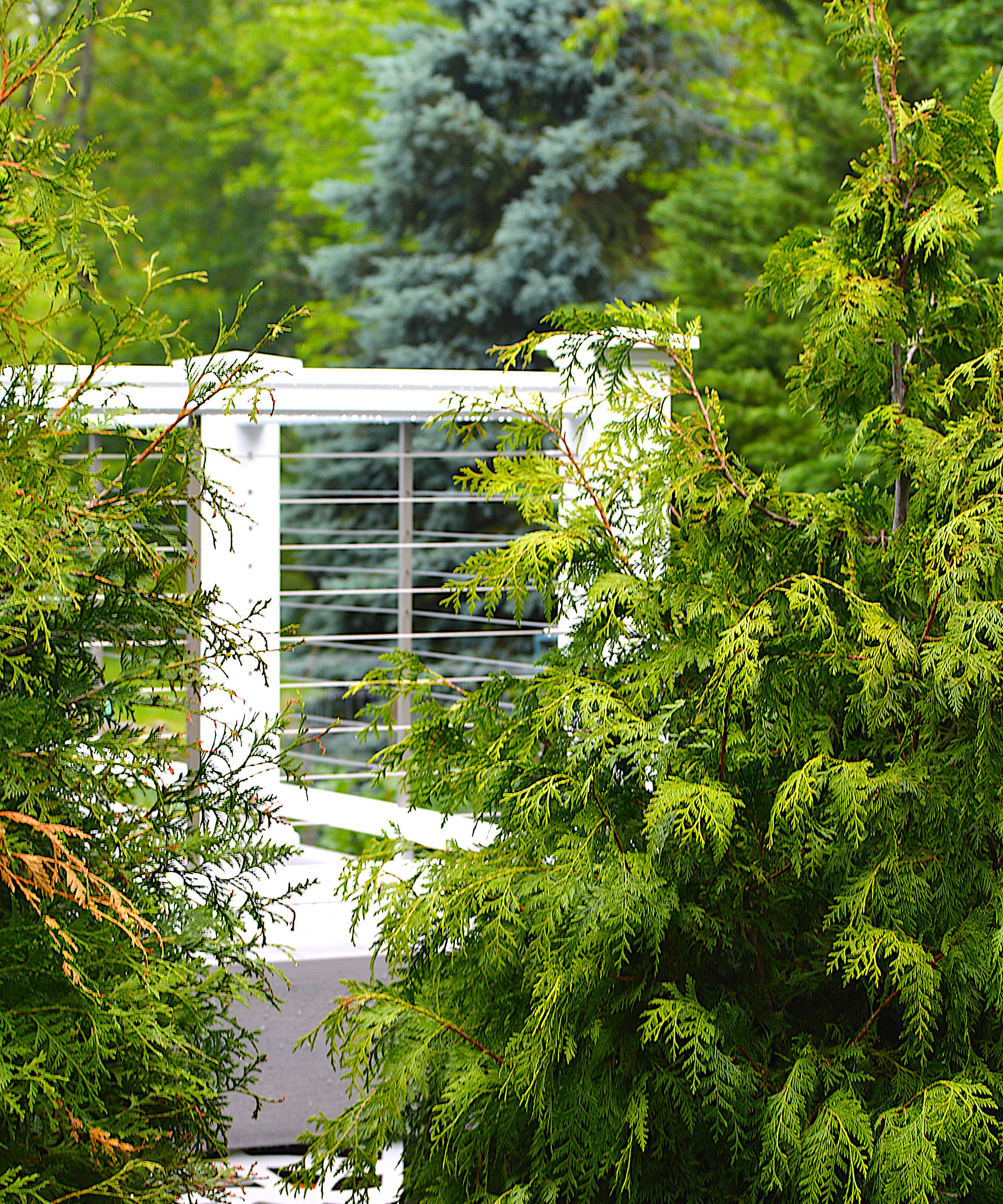
One of the best trees for privacy if you're looking to create dense screening in larger gardens. It can grow to a towering 50-60ft (15-18m) if not tightly controlled with regular pruning (once a year at least).
This evergreen conifer has glossy, aromatic dark green leaves and brown cones. Cut it back in fall to maintain the shape and size. This is a hardy tree which can cope with cold climates and rugged terrain.
Best for: rapid coverage in large gardens
8. Italian cypress
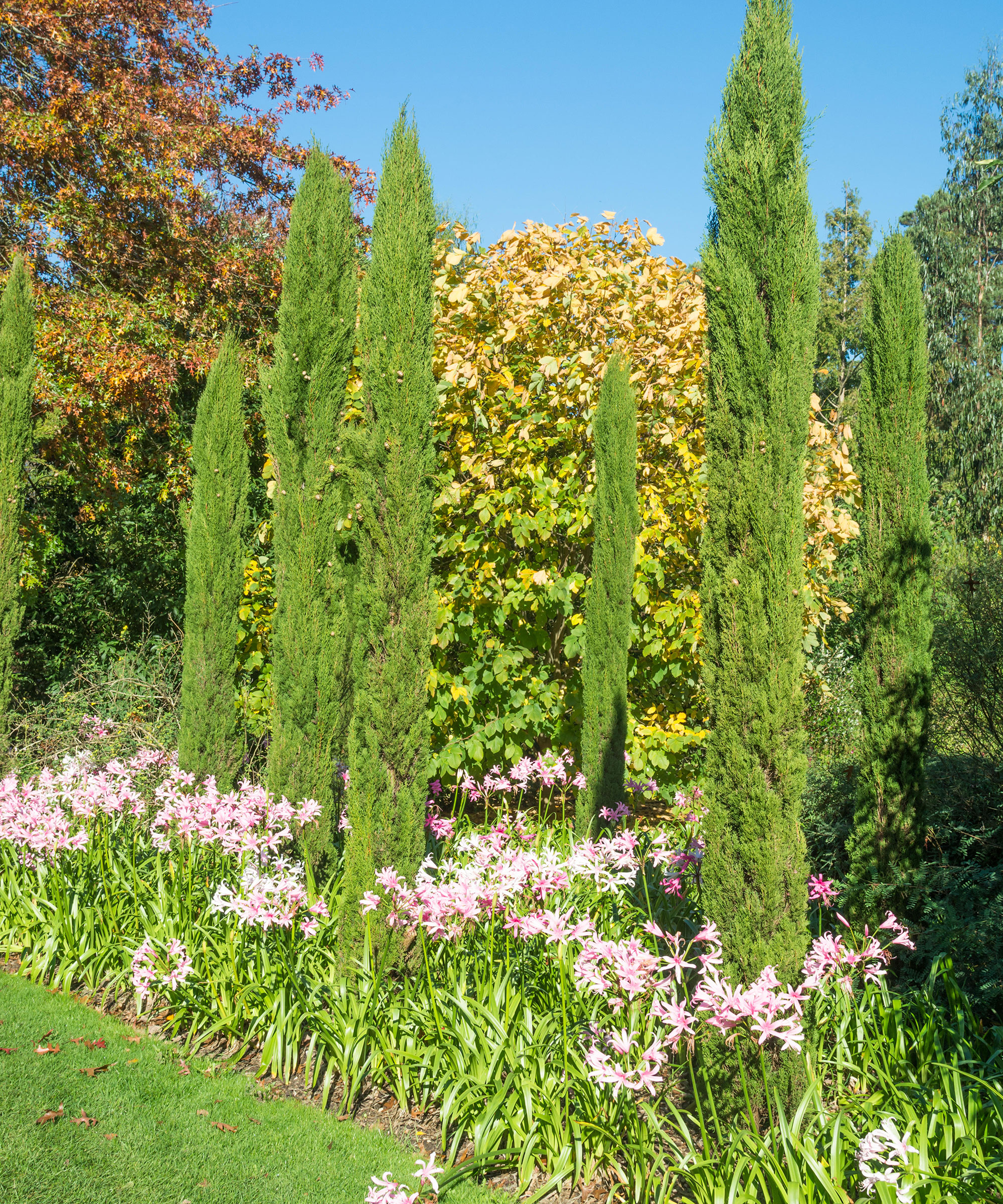
If you're searching for the best trees for small gardens, these pencil slim conifers are a practical choice if you need an extra-tall screen in a compact space.
Tough and hardy, with an architectural shape, they look good placed side by side, anywhere that coverage is needed. They are drought-tolerant, but container grown ones will need regular watering. In the US, they’re best grown in zones 7-11.
Best for: extra-tall coverage
9. Black cherry plum tree
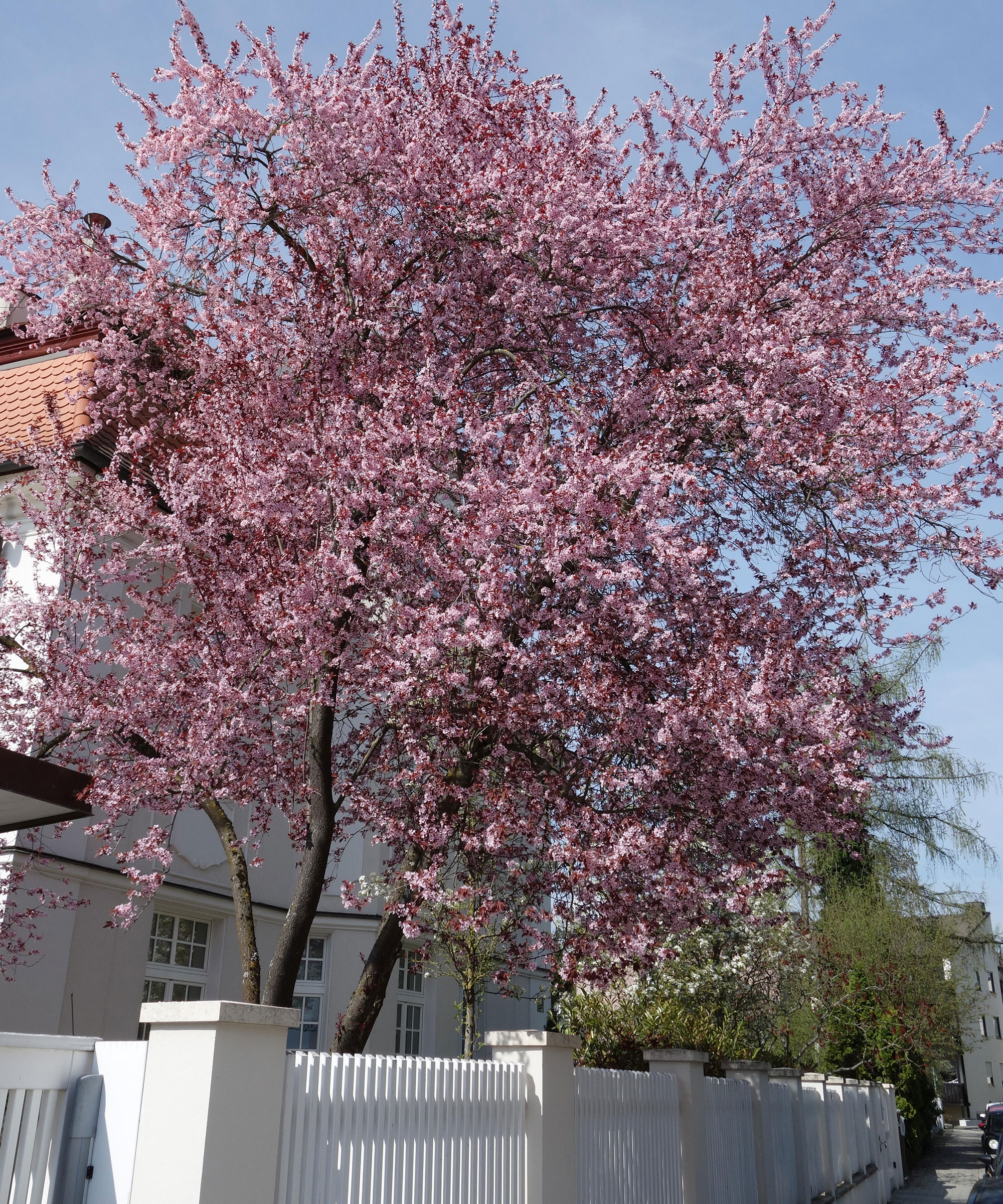
A single tree planted in front of a house can perform a double function: creating an attractive focal point while screening the windows from curious passers-by.
Ornamental cherry trees are one of the best trees for front yards, particularly Prunus cerasifera ‘Nigra’ which has masses of pale blossom in March and April, on rich purple/chocolate coloured foliage. It’s a medium sized tree with a pleasing, rounded shape, which grows around 16ft (5m) tall in 20 years. It can cope with pollution in urban gardens and thrives in sun or partial shade in well-draining soil.
Best for: front garden privacy
10. Western Red Cedar
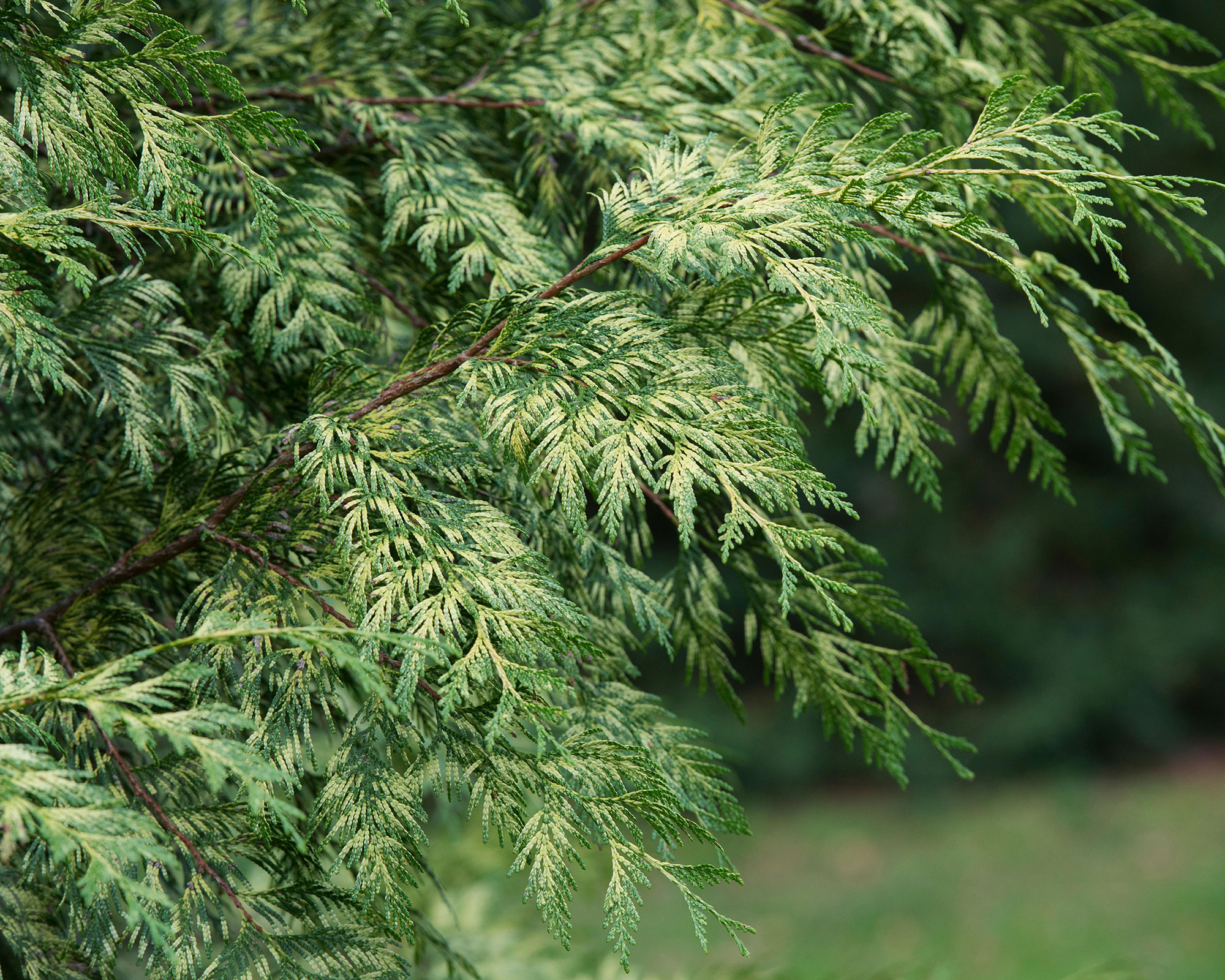
Evergreen Thuja Plicata is a fast growing tree, increasing at around 40-60cm per year. It can make a good alternative to the more problematic Leylandii and is an ideal choice if you want to create a dense screen along a boundary.
It grows best in full sun or partial shade and typically reaches around 35m in height with a conical shape. You can keep its height in check with regular pruning if you want to use it as more of a hedging plant. It also gives off a lovely cedar scent when you brush past it.
Best for: a dense boundary screen with a cedar scent
How far from your house should you plant a tree for privacy?
This is a really important question before going ahead with purchasing one of the best trees for privacy. You need to weigh up the benefits of screening versus the potential for damage to your property, which can be created by invasive roots or ground shrinkage caused by the tree taking up all the ground water.
That being said, most trees are unlikely to cause many issues, providing you carefully consider the final height and spread of the tree when it will be fully grown. According to Tony Kirkham, 'the general rule of thumb is to work out what the overall height of the tree is when mature and plant it three quarters of its height away from the house.'
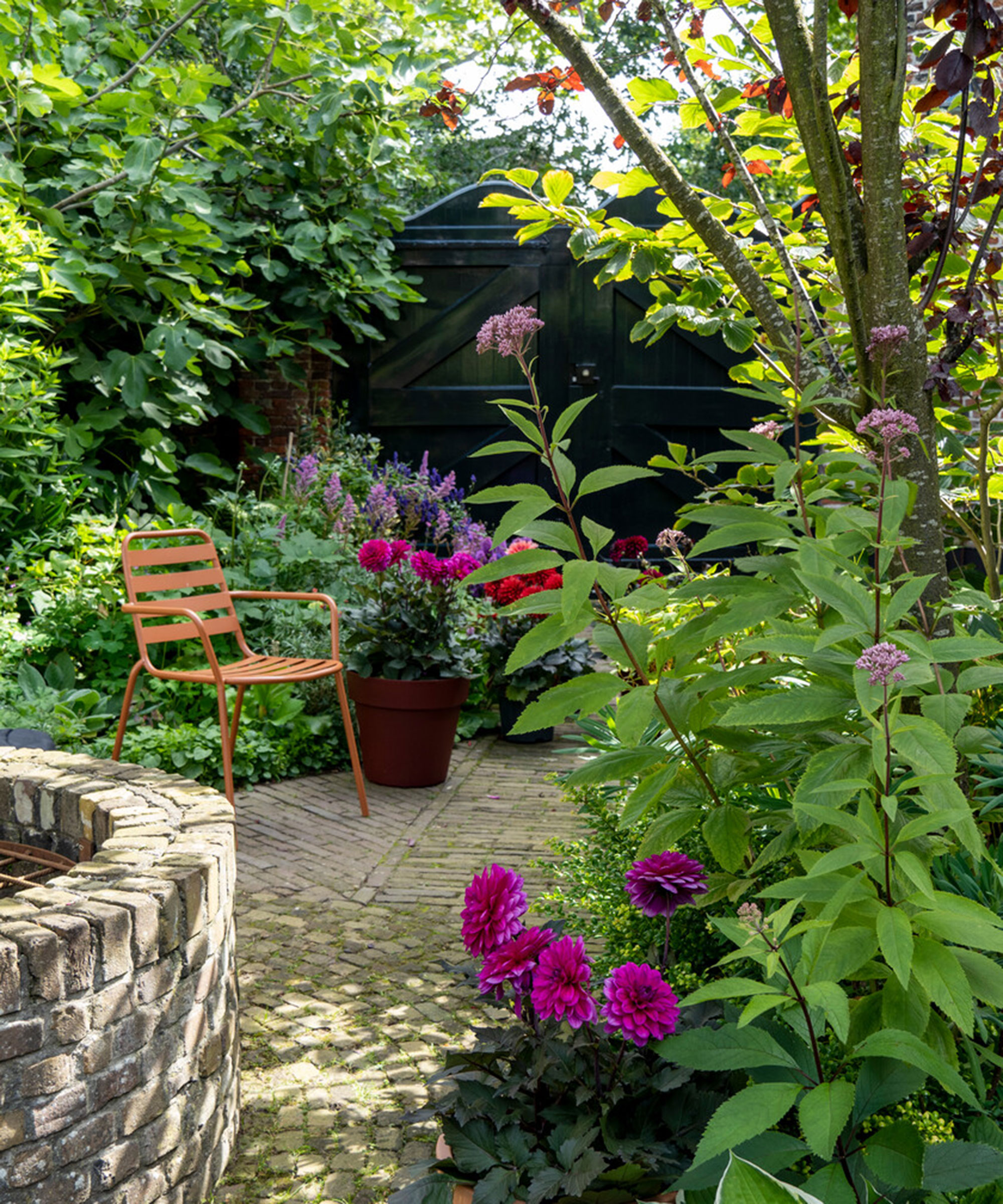
What type of tree grows fast for privacy?
Healthy trees grow fastest, so ensure that you buy from a trustworthy source and follow the planting and care instructions closely. Whether you are planting bare root trees or a more established specimen, watering your new tree regularly for the first couple of years is key. Most garden centers and specialist tree nurseries will be only too happy to offer additional advice if you have never grown a tree before.
What is the fastest growing evergreen for privacy?
Leylandii is one of the fastest growers, but it’s not the prettiest tree, and its vigorous habit is notorious for creating boundary issues. Certain species of eucalyptus can grow up to 9ft (2m) in a single year. The aptly named Thuja Green Giant sprouts 3ft (0.9m) annually, Italian Cypress adds around two feet (0.6m) per year.
For US gardeners in zones 7-9, the Arizona Cypress will grow an impressive three feet (0.9m) a year. Trees can be contained with regular pruning at the right time of year, but it is important to choose one whose proportions won’t take over your landscaping ideas.
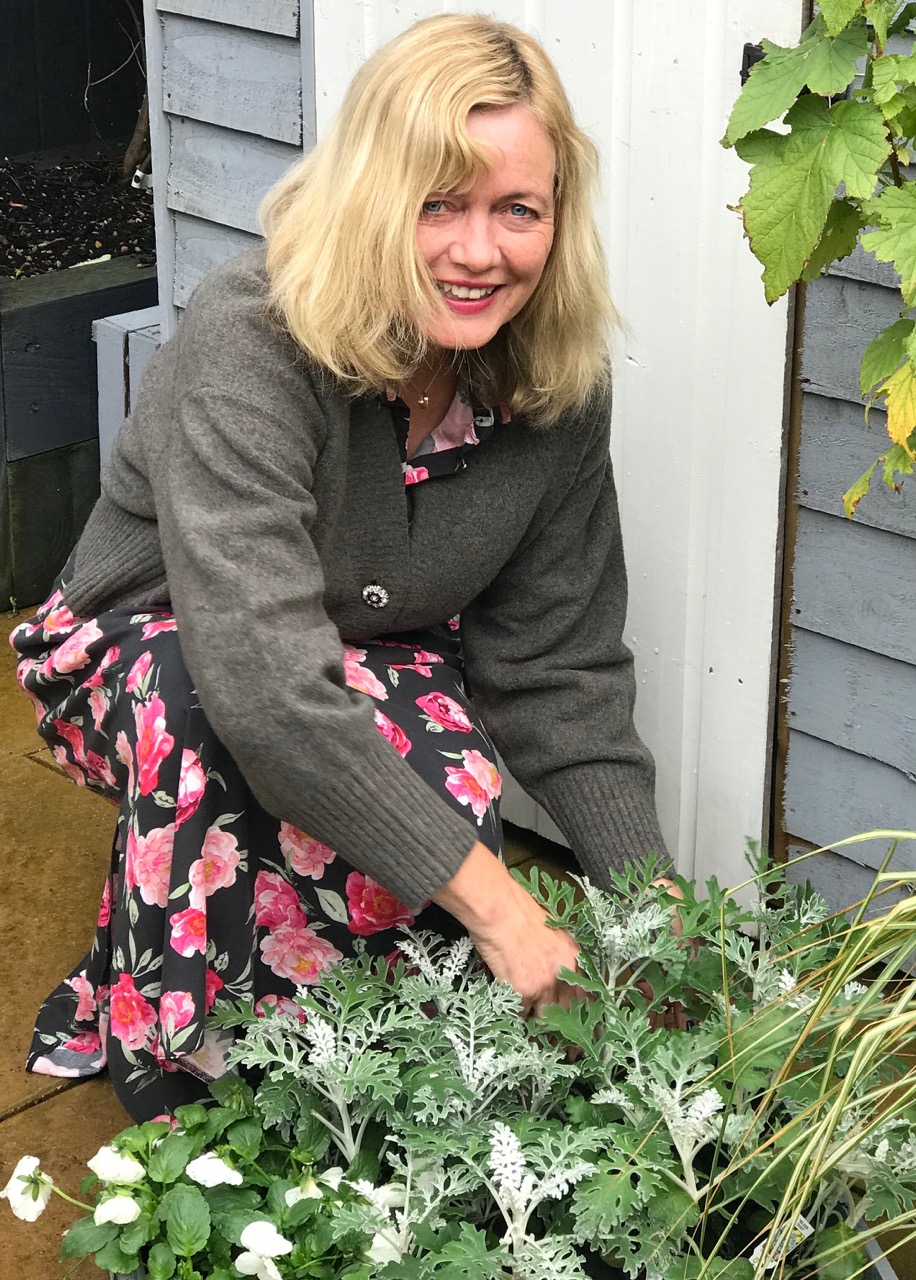
An experienced freelance journalist, editor and columnist writing for national magazines and websites, Fiona now specialises in gardens. She enjoys finding and writing about all kinds, from the tiniest town plots to impressively designed ones in grand country houses.
